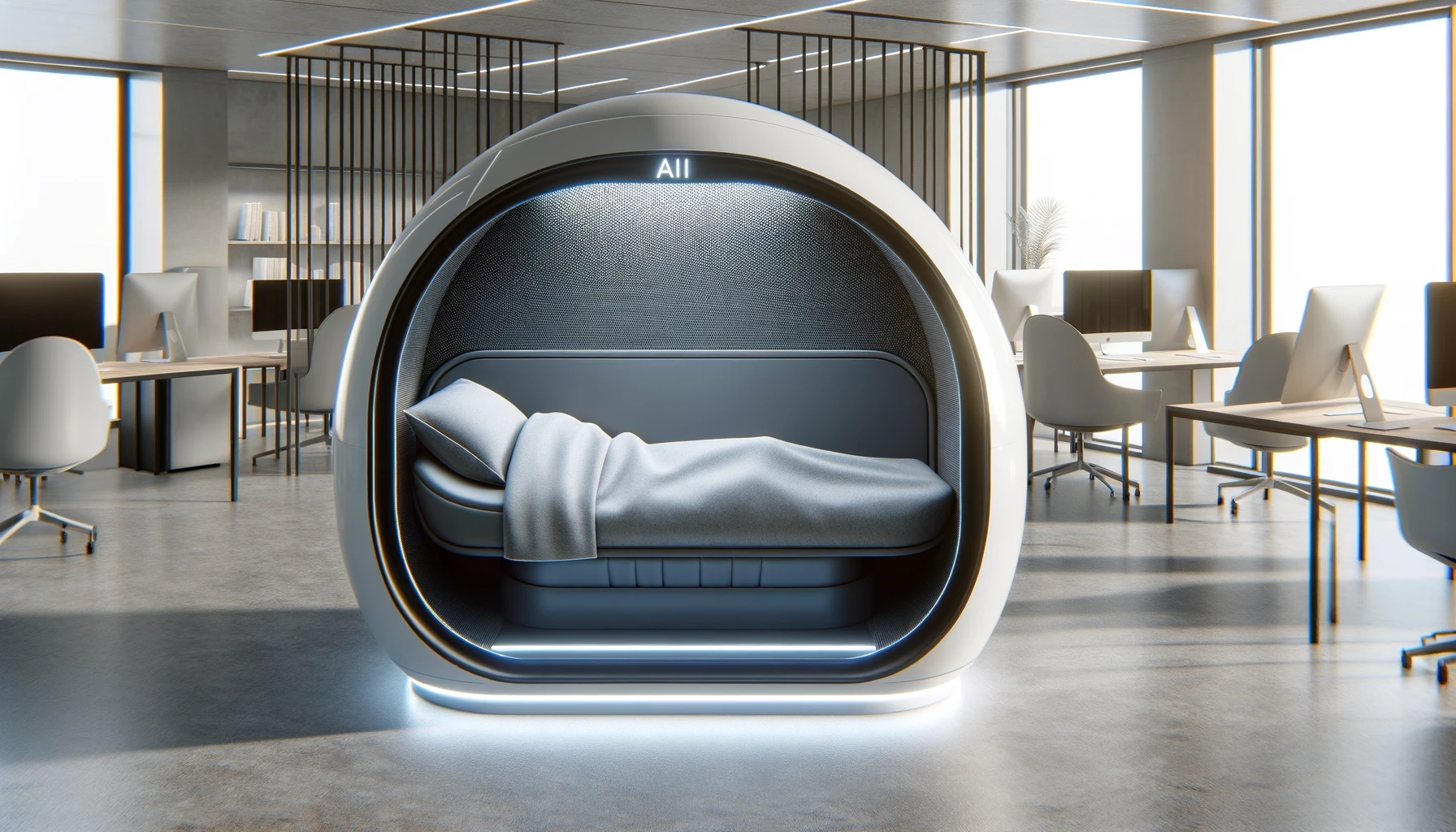In a bold shift from the traditional hustle culture of Silicon Valley, AI startups are increasingly incorporating nap pods into their office environments. This move aims to improve employee well-being and productivity in an industry known for its relentless pace and demanding work schedules.
The Trend Takes Root
TechCrunch reported on May 18, 2024, that numerous AI startups in Silicon Valley are now adopting nap pods as part of their office infrastructure. These high-tech sleeping units, resembling futuristic capsules, offer employees a chance to rest and recharge during the workday. This trend is gaining traction as companies recognize the need to combat burnout and enhance overall performance.
Leading this initiative is DeepDream, an AI firm that recently installed nap pods across its offices. CEO Lara Mills emphasized the importance of employee well-being in a sector driven by innovation and high stakes. “Our team’s creativity and problem-solving abilities are our most valuable assets,” Mills stated. “Providing a space for rest ensures they can maintain peak performance without compromising their health.”
The Science Behind Napping
Research has long supported the benefits of napping, linking short sleep sessions to improved cognitive function, increased creativity, and better memory retention. A study by NASA found that a 26-minute nap could enhance performance by 34% and alertness by 54%. In the fast-paced world of AI development, where precision and innovative thinking are crucial, these benefits are particularly valuable.
Nap pods, designed with features such as noise cancellation, adjustable lighting, and ergonomic support, create an optimal environment for short, restorative naps. By integrating these pods into their workplaces, AI startups are not just following a trend but are also making a strategic investment in their workforce’s productivity and innovation potential.
A Cultural Shift in Silicon Valley
Silicon Valley has long been synonymous with a relentless work ethic, often glorifying long hours and minimal rest as a badge of honor. However, the tide is turning as more companies recognize the drawbacks of such a culture. Chronic sleep deprivation, stress, and burnout have been cited as significant issues affecting employee health and organizational efficiency.
From my perspective, the adoption of nap pods marks a significant cultural shift in Silicon Valley. It signals a growing acknowledgment that sustainable productivity stems from balanced work habits and adequate rest. This change is crucial in an industry where the mental agility and creative prowess of employees drive success.
Companies like DeepDream are setting a precedent that challenges the outdated notion that longer hours equate to higher productivity. By prioritizing rest and recovery, these firms are fostering a more humane and effective work environment. This trend could redefine workplace norms in Silicon Valley and beyond, promoting a healthier balance between work and personal well-being.
The Pros and Cons
Adopting nap pods in the workplace comes with its advantages and potential drawbacks. On the positive side, employees benefit from improved mental and physical health, leading to increased job satisfaction and reduced turnover rates. Enhanced cognitive functions and creativity directly contribute to a company’s innovative capabilities and competitive edge.
However, there are challenges to consider. The initial investment in nap pod infrastructure can be significant, and some critics argue that it may encourage longer working hours if employees feel they must compensate for nap time. Additionally, there is a cultural adjustment period as employees and management adapt to this new norm.
Conclusion
As AI startups in Silicon Valley embrace nap pods, they pave the way for a healthier, more balanced approach to work. This shift acknowledges the critical role of rest in maintaining high levels of creativity and productivity. By challenging traditional hustle culture, these companies are not only enhancing their competitive edge but also promoting a sustainable model for future workplaces. As I see it, this trend could redefine the landscape of work culture, making well-being and efficiency complementary goals rather than opposing forces.
Source: https://techcrunch.com/2024/05/18/ai-startups-nap-pods-silicon-valley-hustle-culture/






